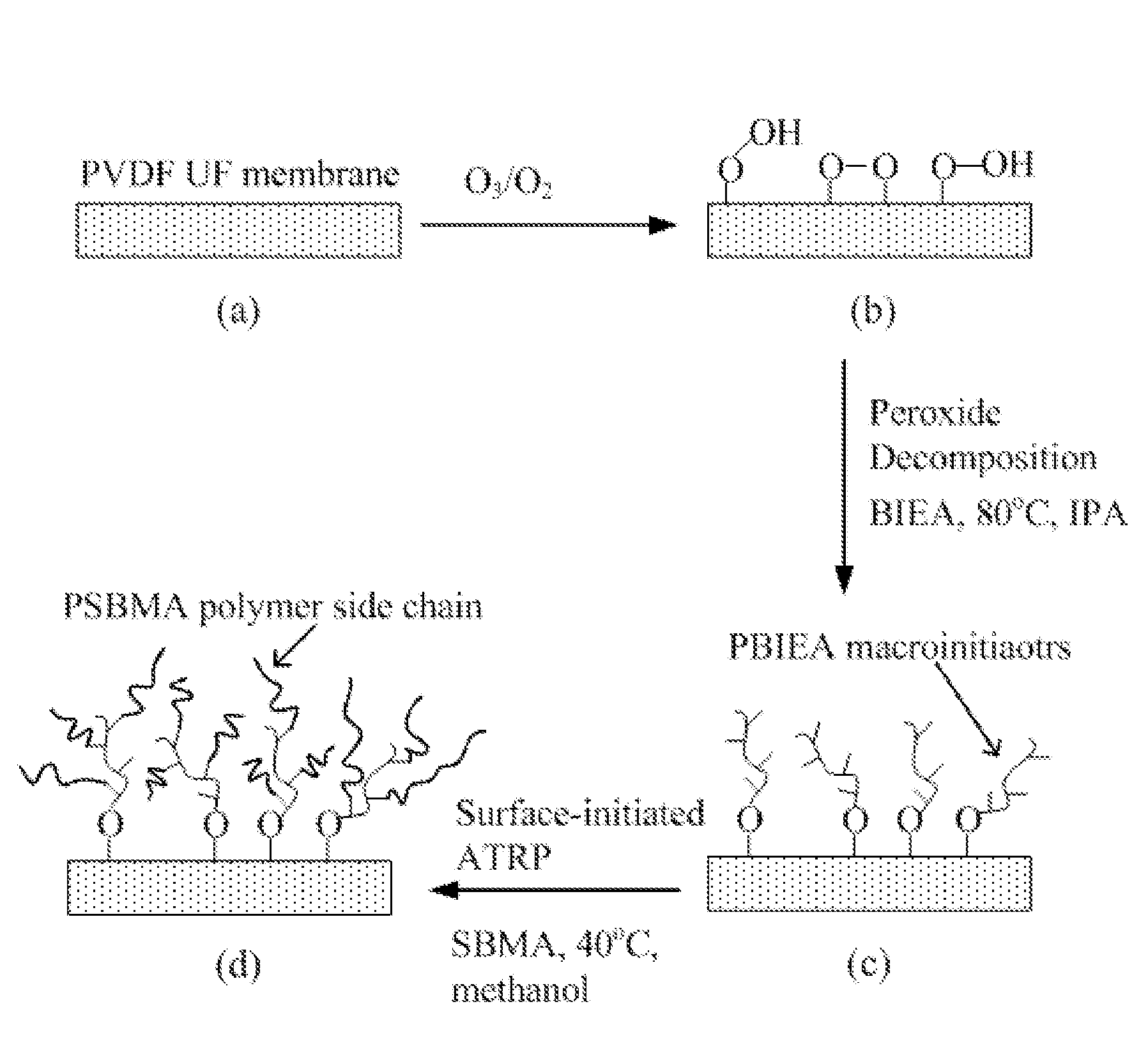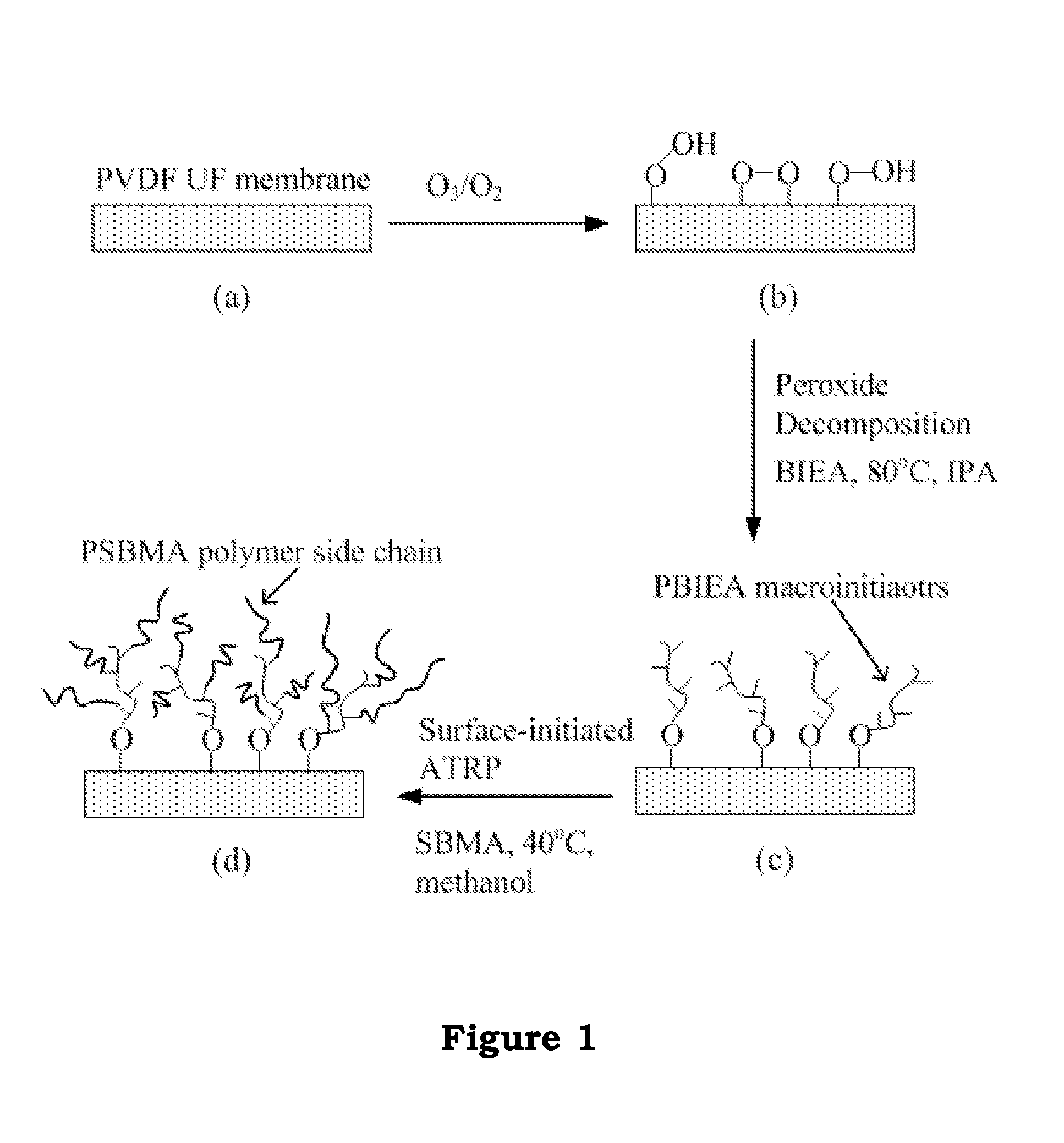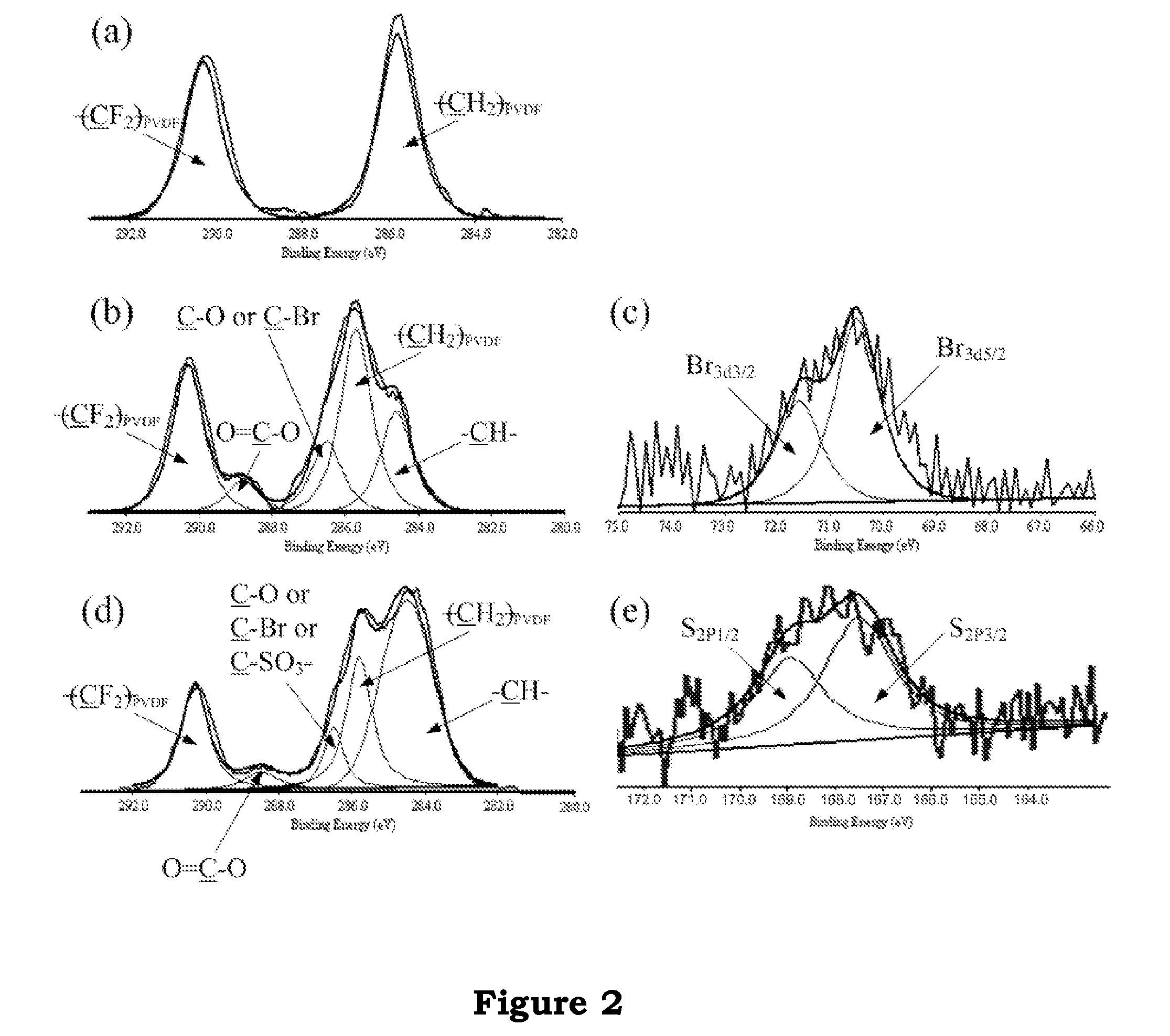Low BIOFOULING FILTRATION MEMBRANES AND THEIR FORMING METHOD
a filtration membrane and low-fouling technology, applied in the field of low-fouling filtration membranes, can solve the problems of peg or oeg group decomposition, insufficient surface area to prevent cell adhesion, and propagation of unwanted fouling
- Summary
- Abstract
- Description
- Claims
- Application Information
AI Technical Summary
Benefits of technology
Problems solved by technology
Method used
Image
Examples
example
Poly(vinylidene fluroride) UF Membranes with Grafted Zwitterionic Sulfobetaine for Bovine Serum Albumin (BSA) Separation and Plasma Protein (albumin and globulin) Separation
[0031]1. Materials and Methods
[0032]A. Materials
[0033][2-(Methacryloyloxy) ethyl]dimethyl(3-sulfopropyl)-ammonium hydroxide (sulfobetaine methacrylate, SBMA) macromonomer was purchased from Monomer-Polymer & Dajac Laboratories, Inc. Copper(I) bromide (99.999%), 2-bromoisobutyryl bromide (BIBB, 98%), pyridine (98%), 2-Hydroxyethyl acrylate (97%), 2,2″-bipyridine(BPY, 99%), and triethylamine(99%) were purchased from Sigma-Aldrich. Isopropyl alcohol (IPA, 99%) was obtained from Sigma-Aldrich and was used as a solvent for the ozone treatment and graft copolymerization. NVN-Dimethylacetamide (DMAc, 98%) for preparing the membrane casting solution was obtained from Sigma-Aldrich. 2-(2-bromoisobutyryloxy) ethyl acrylate (BIEA) was synthesized through the reaction of BIBB and 2-Hydroxyethyl acrylate using a method publis...
PUM
| Property | Measurement | Unit |
|---|---|---|
| Temperature | aaaaa | aaaaa |
| Concentration | aaaaa | aaaaa |
| Concentration | aaaaa | aaaaa |
Abstract
Description
Claims
Application Information
 Login to View More
Login to View More - R&D
- Intellectual Property
- Life Sciences
- Materials
- Tech Scout
- Unparalleled Data Quality
- Higher Quality Content
- 60% Fewer Hallucinations
Browse by: Latest US Patents, China's latest patents, Technical Efficacy Thesaurus, Application Domain, Technology Topic, Popular Technical Reports.
© 2025 PatSnap. All rights reserved.Legal|Privacy policy|Modern Slavery Act Transparency Statement|Sitemap|About US| Contact US: help@patsnap.com



